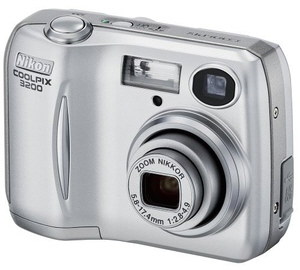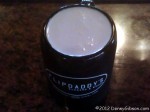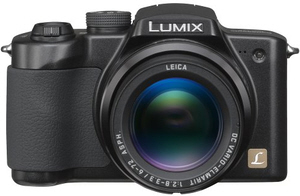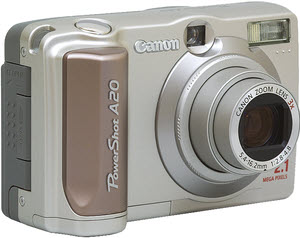 In the year and a half between my buying the DMC-FZ5 and banging it against the ground in Missouri, Panasonic had been improving the line and dropping the price. In June of 2007, I was able to buy the latest model, the FZ8, for $340 or roughly fifty dollars less than I’d paid for the FZ5. Resolution was up from 5.0 MP to 7.2 MP and manual focus was added. Overall, the changes were more evolutionary than revolutionary, the size was up just a smidgen, and the weight was still under eleven ounces. I had an even more capable camera and I didn’t have to be completely retrained.
In the year and a half between my buying the DMC-FZ5 and banging it against the ground in Missouri, Panasonic had been improving the line and dropping the price. In June of 2007, I was able to buy the latest model, the FZ8, for $340 or roughly fifty dollars less than I’d paid for the FZ5. Resolution was up from 5.0 MP to 7.2 MP and manual focus was added. Overall, the changes were more evolutionary than revolutionary, the size was up just a smidgen, and the weight was still under eleven ounces. I had an even more capable camera and I didn’t have to be completely retrained.
The FZ8 has something called “extended optical zoom” that moves the upper end from 12X to 18X when a smaller picture size is used. I’ve always shot at the highest resolution so have never used this extended mode. Maybe I should try it. That’s a whopping 648mm (35mm equivalent) at maximum zoom.
I use past tense to talk about acquiring the FZ8 but present tense to talk about using it. This five year old camera still sees a lot of action although its service hasn’t been entirely uninterrupted. About six months into its life, it got dropped onto the concrete floor of the garage. The distance was only a few inches but the concrete didn’t give at all. The result was an FZ8 whose functionality matched my FZ5. The lens was jammed and powering on the camera was futile. There was one big difference between the two, however. The FZ8 was still in warranty.
I believe I had to pay for shipping to the repair center and there was no guarantee that repair would be covered or even possible. The camera was gone for several weeks and. for a variety of marginally valid reasons, I bought a replacement while it was in the shop. But it did come back with a note about something with a big name being replaced and it has worked flawlessly ever since.
The premature “replacement” was an SLR which will appear in the next My Gear installment. It was a relatively small SLR but it was still considerably heavier and bulkier than the Panasonic. The FZ8 is small and light enough to use easily with one hand and its image stabilization may even help a little with those one-handed driving-down-the-road shots. That is also one of the few situations where being able to switch from the viewfinder to the 2.5 inch LCD is useful. Like the FZ5, the FZ8 fits into a belt bag and it often goes with me, quite unobtrusively, into restaurants and such. Many of the food filled plates that appear in the trip journals were captured with the Panasonic. A few were even captured on the built in memory. It’s only about 27 MB but that’s enough to record a few pictures and save me a walk to the car when I’ve forgotten to check that a memory card is in place.
My Gear – Chapter 11 — Garmin Quest

 Unlike most of my camera purchases, the
Unlike most of my camera purchases, the 
 This was my 2005 Christmas present to myself. It was clearly a step up in many regards but it was also a step away from some characteristics I’d cherished in my previous digital cameras. The change in form is significant. Although the Lumix DMC-FZ5’s height and width were each but a fraction of an inch larger than the
This was my 2005 Christmas present to myself. It was clearly a step up in many regards but it was also a step away from some characteristics I’d cherished in my previous digital cameras. The change in form is significant. Although the Lumix DMC-FZ5’s height and width were each but a fraction of an inch larger than the  Late in the spring of 2004, the lens on my A20 zoomed its last. As I recall, it was stuck somewhere in the middle of its range. It still took pictures but the lack of zoom was irritating and the permanently protruding lens made it awkward to pocket. Besides, there had been three years of progress since my last camera purchase and I was ready to take advantage of it.
Late in the spring of 2004, the lens on my A20 zoomed its last. As I recall, it was stuck somewhere in the middle of its range. It still took pictures but the lack of zoom was irritating and the permanently protruding lens made it awkward to pocket. Besides, there had been three years of progress since my last camera purchase and I was ready to take advantage of it. As I looked back over my travel gadget purchases, it was immediately obvious that many preceded a major trip. The idea of a long lived website, rather than a one trip experiment, started to form as I got serious about retracing a 1920 Florida trip
As I looked back over my travel gadget purchases, it was immediately obvious that many preceded a major trip. The idea of a long lived website, rather than a one trip experiment, started to form as I got serious about retracing a 1920 Florida trip  There has always been some hardware associated with my road trips. In order to update a website, I needed some sort of computer and, if I intended to include photos in those updates, I needed a digital camera. GPS has also been part of the mix from the beginning. A computer, a camera, and a GPS receiver have been my travel companions on every trip but they have changed at least as much as I have though in different directions. While I’ve gotten weaker and slower and balder, they’ve become more powerful, faster, and more loaded with features.
There has always been some hardware associated with my road trips. In order to update a website, I needed some sort of computer and, if I intended to include photos in those updates, I needed a digital camera. GPS has also been part of the mix from the beginning. A computer, a camera, and a GPS receiver have been my travel companions on every trip but they have changed at least as much as I have though in different directions. While I’ve gotten weaker and slower and balder, they’ve become more powerful, faster, and more loaded with features.